YOGA
Heal Your Feet: Yoga for Plantar Fasciitis Relief
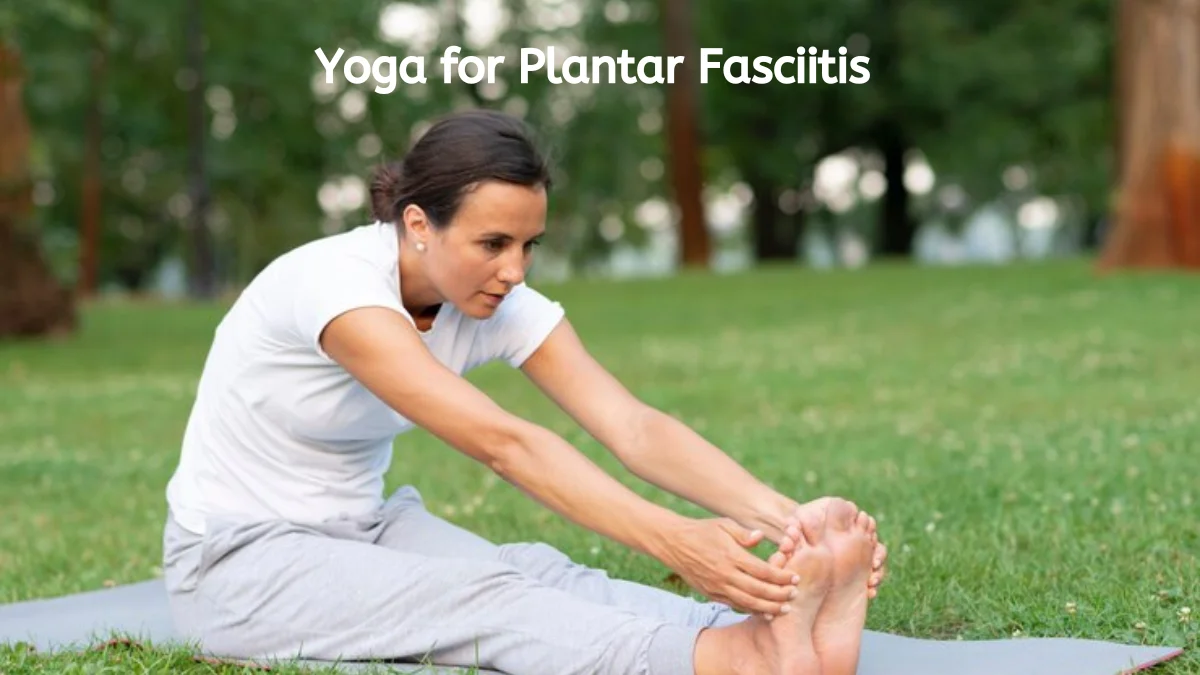
Do you suffer from the sharp pain of plantar fasciitis that makes each step feel like torture? Say goodbye to your foot woes and say hello to what yoga has in store for plantar fasciitis relief! Experience how even the simplest of poses can help to offer relief from your symptoms, helping you to be back on your feet in no time, feeling stronger, happier, and more in balance.
Table of Contents
What is Plantar Fasciitis?
Plantar Fasciitis is a common foot condition causing pain in the heel or arch. It arises from the inflammation of the plantar fascia, a thick band of tissue connecting the heel bone with the toes. The cardinal symptom is a sharp pain in the morning or after rest, returning after prolonged movement. This left untreated exerts great impact on everyday activities and quality of life. Timely intervention by yoga strategies in this issue can bring about relief and prevention.
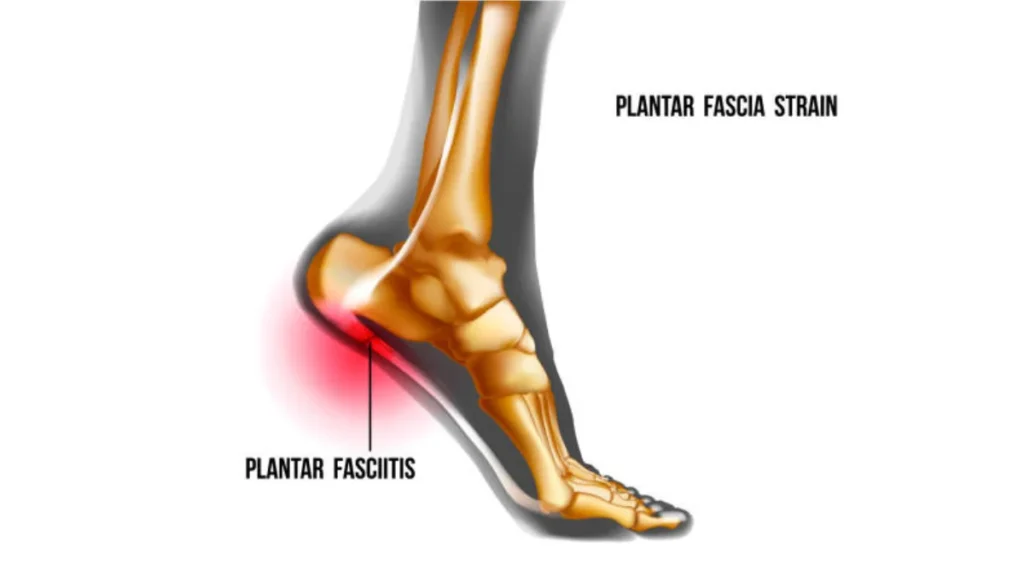
Understanding the Role of Yoga For Plantar Fasciitis
When it comes to treating or even relieving the pain of plantar fasciitis, yoga may be a game-changer. The three pillars of good foot health—flexibility, strength, and balance—can be enhanced by the low-impact yoga practice. There are certain positions for the ligaments and muscles of the legs and foot. People suffering from plantar fasciitis would probably feel less pain and inflammation.
An individual can also increase the circulation of blood to these areas for quicker healing and reduction of tightness of the plantar fascia by including a yoga exercise routine. Besides, paying special attention during yoga classes can ease stress, which may cause an increase in cases of plantar fasciitis symptoms.
Therefore, all practices recommended for yoga for plantar fasciitis are mindful and gentle. Yield to what the body is signaling and avoid those poses that can either overstretch or cause strain. Yoga can be a wonderful tool for this most common of foot problems, but it should be carefully practiced with consistent alignment.
Causes and Symptoms of Plantar Fasciitis
In a major way, it entails the fact that the main leading cause of Plantar Fasciitis is the inflammation of the plantar fascia. It causes inflammation, overuse, and high-impact activities such as running, or even standing for long hours.
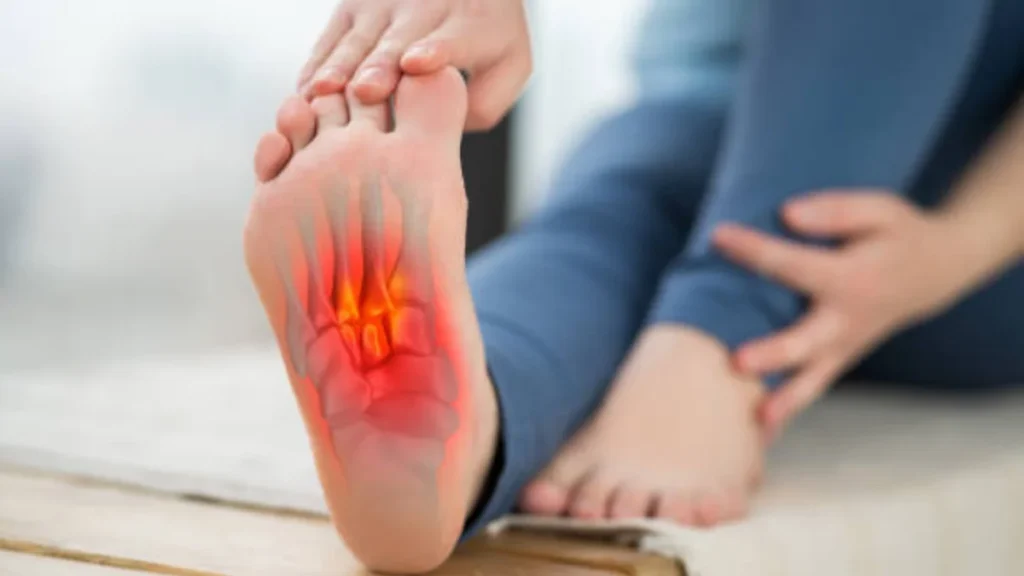
Symptoms
• Sharp heel pain, especially morning steps, prolonged sitting, worsening after exercise or standing.
• Stiffness, swelling, and stiffness in the affected foot.
The Benefits of Yoga for Plantar Fasciitis Relief
There are a lot of benefits that one would reap from using yoga for such people with plantar fasciitis. Among the benefits that one would reap from using yoga for this condition, is the fact that it helps in strengthening and at the same time stretching the muscles in the feet, ankles, and calves, hence reducing any tightness and consequently any pain experienced by the patient in this condition.
Besides, yoga helps to enhance a good line of alignment and good posture, hence improved posture can also help in weight even distribution throughout the feet, lessening pressure on the plantar fascia ligament.
Furthermore, the whole body experiences increased flexibility with the practice of yoga, even through the feet. Greater flexibility may prevent muscle imbalance problems that lead to plantar fasciitis, while it can help one attain better ranges of motion in activities that are daily.
It also helps in maintaining stress with a regular commitment to yoga practice. Stress has been identified as one of the aggravating factors in the symptoms of plantar fasciitis; hence, a combination of mindfulness techniques via yoga may help control the increased pain and inflammation episodes.
Yoga Poses for Plantar Fasciitis Relief
Soothe aching feet with these gentle yet very effective yoga poses, all designed to alleviate Plantar Fasciitis pain. A regular practice of yoga will help stretch and strengthen the foot muscles, resulting in relief from painful tenseness.
Garland Pose (Malasana)
- Improves hip flexibility, strengthens lower back and core muscles, and releases tension.
- Practiced with feet hip-width apart, bend knees, lower hips, and bring palms together.
Seated Forward Bend (Paschimottanasana)
- Relieves tight hamstrings and helps stretch the spine.
- Increases flexibility, calms the mind, relieves stress, improves digestion, and stimulates internal organs.
Downward Dog (Adho Mukha Svanasana)
- Stretches calves, hamstrings, and arches of the feet.
- Strengthens legs and feet muscles, promotes healing, and reduces inflammation.
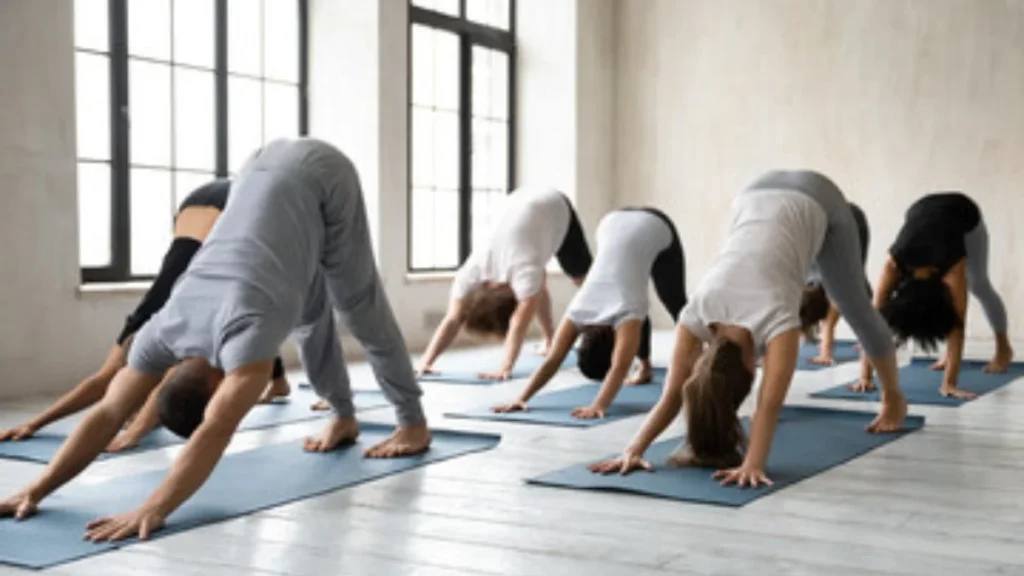
Tabletop to Toe Pose
- Targets feet, ankles, and calves, improving flexibility and strengthening foot muscles.
- Hold for a few breaths, listening to the body.
High Lunge
- Stretches and strengthens feet, ankles, and calves.
- Practiced by stepping forward into a lunge position, engaging core muscles, and lower hips towards the mat.
Chair Pose (Utkatasana)
- Strengthens ankles, thighs, and calves while engaging core muscles.
- Practiced by standing tall with feet hip-width apart, maintaining alignment.
Upward Salute (Urdhva Hastasana)
- Stretches posture, circulation, and mental health.
- Regular practice can relieve tension in the upper back and shoulders.
Vajrasana (Thunderbolt Pose) with toes flexed
- Sits on heels with toes curled under, stretching feet, and relieving tension in arches.
- Regular practice can prevent and alleviate symptoms.
Viparita Karani (Legs-up-the-Wall Pose)
- Improves circulation and reduces inflammation.
- Practiced with hips close to the wall and relax for several minutes.
Standing Forward Fold
- Stretches hamstrings and calves while relieving spine tension.
- Adjusts to the body’s limits for overall foot health and flexibility.
Tree Pose
- Promotes stability and focus.
- Engages core muscles, takes deep breaths, and envisions growth and resilience.
Warrior II Pose
- Strengthens legs, opens hips, and improves balance.
- Practiced in Mountain Pose.
Triangle Pose
- Opens up hips, extends hamstrings, and provides a gentle foot stretch.
- Strengthens and tones muscles, improves balance, and promotes flexibility.
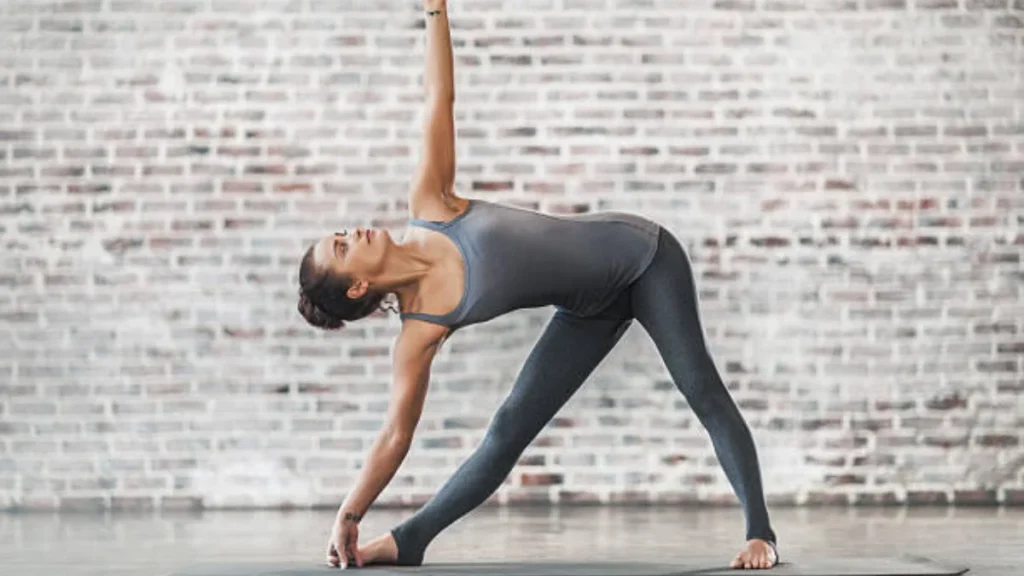
Bound Angle Pose
- Targets inner thighs and groins, improving flexibility and releasing tension.
Tips for avoiding plantar fasciitis
Preventive measures include proper foot care, supportive shoes, refraining from walking barefoot on hard surfaces, exercises to stay weight-conscious, stretching before and after physical activities, strengthening the foot muscles, not allowing sudden activity, taking a few minutes breaks during long-standing or walking period, and massaging the feet so that it will not be tight and will promote blood flow, which can prevent a delay in injury recovery like in plantar fasciitis.
Conclusion
In conclusion, yoga is probably just another tool in the armory for patients dealing with plantar fasciitis in such a way that it will offer them a completely natural way of mitigating pain and discomfort. Some poses and stretches may be somewhat beneficial to strengthen the feet, increase flexibility, and decrease inflammation in the area. It is important to listen to your body and modify any poses that may cause further discomfort.
-

 GENERAL1 week ago
GENERAL1 week agoChristofle – For Those Who Dream of Family Heirloom Silver
-

 GENERAL2 months ago
GENERAL2 months agoUncovering the World of кинокрадко: The Dark Side of Film Piracy
-

 GENERAL3 weeks ago
GENERAL3 weeks agoUnveiling the Art of преводсч: How Translators Bridge Language Barriers
-

 SPORTS2 months ago
SPORTS2 months agoDiscover the World of Football with Streameast: Watch Your Favorite Leagues and Tournaments





























